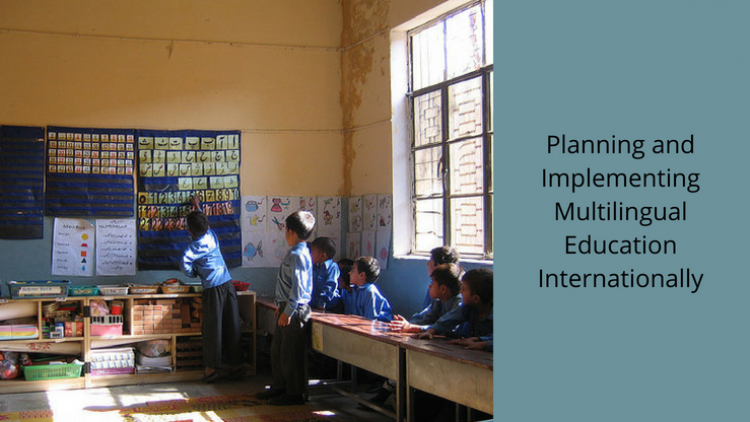Why is it crucial, but difficult, to know teachers’ language and literacy skills?
It is well known that children learn and develop literacy and numeracy skills better when they have instruction in their mother-tongue (or first) language upon entering school. Many countries in Africa, Latin America, and Asia have language policies supporting mother-tongue (local language) instruction, and there is a plethora of donor-supported programs in countries around the world helping to implement these policies.
Most commonly, the approach to mother-tongue instruction is an early-exit bilingual education model, in which instruction is provided mainly in the students’ first language (L1) while oral language skills are developed in their L2 (which could be the ex-colonial language, an international language, or regional language). L2 literacy skills are then progressively developed and, by grade four, students should be proficient in the L1 and L2.
One of the biggest challenges, however, is making sure that the teacher assigned to a particular school speaks, reads, and writes the L1 language of instruction (LOI) as well as having an oral and written command of the L2. Yet very frequently, there is a mismatch between teachers’ language and literacy skills and the school’s designated LOI, which affects the ability of teachers to effectively help students develop their L1 and/or L2 skills.
There are multiple reasons that this mismatch may occur:
- Teachers may speak the L1 but since they didn’t study it in school or their teacher preparation, they do not have the literacy skills to use it for instruction and teach it to students.
- Teacher preparation programs often do not include courses for teachers to develop a local language.
- Teacher deployment policies do not consider the teachers’ language abilities to be a requirement.
- There is a lack of information (and/or information use) on teachers’ language and literacy skills in regards to the LOI of the schools where they are teaching.
To effectively implement mother-tongue instruction, there are some important lessons learned from the field. These include:
- Carry out a language-mapping study at the outset in order to have a comprehensive understanding of what teachers’ language and literacy skills are, particularly in the L1.
- In Early Grade Reading (EGR) programs, include instruments to assess teachers’ language and literacy skills as part of the student EGR assessment.
- Use this information to inform deployment decisions and decisions regarding teacher-grade assignments. Teachers in a school that are competent in the L1 should be assigned to the lower grades.
- Work with Ministries of Education and teacher preparation colleges to include courses in the local languages and conduct training in these languages.
- Provide highly scripted materials to teachers that lack L1 proficiency to help them develop the students’ L1 language and literacy skills while also improving their own.
These are several key recommendations, however, various sources exist that provide specific guidance on how to address this challenge:
- Enhancing learning of children from diverse language backgrounds: Mother tongue-based bilingual or multilingual education in early childhood and early primary school years. http://unesdoc.unesco.org/images/0021/002122/212270e.pdf
- Africa Language and Literacy. https://code.ngo/africa-language-and-literacy
- Optimising Learning, Education and Publishing in Africa: The Language Factor–A Review and Analysis of Theory and Practice in Mother-Tongue and Bilingual Education in Sub-Saharan Africa. http://unesdoc.unesco.org/images/0021/002126/212602e.pdf
DevTech has a practice area devoted to Education, Gender and Youth. You can see examples of the projects we have done here.








